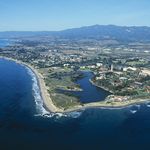 Adobe Community
Adobe Community
- Home
- Lightroom Classic
- Discussions
- Re: Duplicate files in different folders
- Re: Duplicate files in different folders
Copy link to clipboard
Copied
I'm pretty new to LrC, so please forgive if this is a stupid question. Plus, I have looked at various posts in the community and have not found an answer to my specific problem. Finally, I have a somewhat fuzzy memory of the recent past and may get some of the "facts" wrong.
When I was just getting started, I imported a large number of photos in folder A into LrC. What I remember doing is copying some of those files into another folder B; I don't remember any warnings from LrC about duplicates, but as a newbie, I may have ignored them. I also may have done the import in the other order, i.e., imported into B first, then A. Subsequently, I made some edits, e.g., clipping, to the original photos in B. I also used Photo AI which created new photos in B.
I am now trying to clean up my catalog. I found that any photo in B does not show up in the Library view when I look at A. However, LrC does know about it, as when I look at a Import dialog, I can see the photo and hovering over it brings up a popup saying "This photo has already been imported".
What I want to do is move all of the work I've done in B to A. When I try to move an original (with or without edits), I get a dialog saying "File already exists a location". Yes that is true, but I also can find no way to delete the file in LrC. If I delete the original (or rename it) in A, LrC simply hangs, or at least the move never completes, but I can kill it. However, the edited files produced by PhotoAI move over just fine.
Any advice? Thanks!
 1 Correct answer
1 Correct answer
LrC apparently knows a file in folder A is a duplicate of a file somewhere else in the catlog, though it can't tell me where (or I don't know how to get it to tell me)
You search for the photo using the LrC Filter Bar, click on "All Photographs" and then search by specifying the file name
My problem is that when I look at folder A via the LrC Library LrC does not show the duplicate file; thus I can't add keywords or do anything to it.
Again, you need to search for the "duplicate" via file name.
...
Copy link to clipboard
Copied
You would be much better off if you used Collections instead of folders to organize edits. Collections are sort of like folders except that they are virtual and only exist in the LrC catalog. A single image can be in multiple Collections without making copies of it.
https://helpx.adobe.com/lightroom-classic/help/photo-collections.html
Copy link to clipboard
Copied
I already use Collections for some purposes, and heavily use Smart Collections for other purposes. However, it has not occured to me to use them as the place to do all edits. You clearly know LrC a lot better than I do, so I hope you won't mind if ask some followup questions.
Let me explain a bit about my current photo organization and workflow so that you can help me better understand what you are suggesting. I photograph wildlife -- primarily birds. I copy photos from my camera SD card into a folder on my laptop SSD with the folder name containing the date and location of the shoot. I import that folder into LrC and add a location keyword on import; I then add the appropriate species (and other) keywords to the photos (I cull before and during this keywording step). At this point LrC has my "keeper" original photos with keywords to support various searches.
With my current mindset, I want to do the majority of the editing on a photo once. My goal is to keep the subject as natural as possible, while making sure I get the right differentiation between the subject and the rest of the photo. When I want to edit a photo, I go the the imported folder in LrC. I clip the original such that I get the most flexibility in preserving context while minimizing the size of the remaining photo (to save space, etc.). I then send the clipped original through Photo AI, which results in a new file in the same folder; the new file has at least as many pixels as the old and can have more, depending on the quality of the original. I then do further edits on the new file; this includes masks so that I can edit the subject and the rest of the photo differently (BTW, this has been the subject of another community discussion where I've been told this is unnecessary); it usually includes further clipping. I also have to check to make sure the keywords for the original get copied to the new file. I guess the edits in the catalog gets associated with the folder. My theory is that in general, I'd never, or maybe rarely, touch the original file again; anything else would start with the "properly edited" new file produced by Photo AI. So, for example, if I had two collections I could add the "properly edited" photo to both and then perform additional editing as needed, e.g., a different crop.
All that said, I believe you are suggesting a very different approach, i.e., never editing the original imported file. But I don't understand what collection you'd use to do the edit. As far as I can determine, you can't reference a photo in a collection from another collection (I have not tested this). Thus, if I want a photo to be in two difference collections I have to reference the original and edit it in each collection. That means I'd have to perform the laborious (the way I do it) masking and the sometime difficult exposure/contrast/etc work two times (unless there was a way to sync the two collections)! I must be missing something.
I hope you can help me understand. Thanks.
Copy link to clipboard
Copied
In addition to Theresa's suggestion, using color labels is also a way to manage different develop statuses.
I also would like to second Theresa: Using folders for managing files is not the way to go.
Please also note that when moving files and/or folders, always do this manipulation from within LrC and not with finder.
Copy link to clipboard
Copied
I need to clarify. I think I got myself into my conundrum by inadvertently importing the same file into two different folders. I attempted to do what I want to do (move files with edits from one folder to another) within LrC, but it won't let me move the original file to a folder that recognizes a duplicate. So, I've resorted to using Finder to try to fix the problem, with no success. I was hoping, in addition to the good advice for moving forword, I could get some advice on how to fix my problem, but alas, there may not be a fix.
The good news is, that with my recently revised workflow, and greater knowledge about how LrC works or does not work this problem should not occur again.
Copy link to clipboard
Copied
Forget what folder photos are in. Clearly you are not sure of what is where. Leave the photos where they are now. Use keywords to organize and for searching. If you do this, duplicates ought to show up under the same keywords, and at that point you can delete the "duplicate" if you wish.
Copy link to clipboard
Copied
I think I need to clarify. I know where the duplicates are (MacOS Finder tells me, whether invoked from LrC or directly); LrC apparently knows a file in folder A is a duplicate of a file somewhere else in the catlog, though it can't tell me where (or I don't know how to get it to tell me). My problem is that when I look at folder A via the LrC Library LrC does not show the duplicate file; thus I can't add keywords or do anything to it. I can see the file in folder B. I can't figure out how to get LrC to do anything with the file in folder A.
Copy link to clipboard
Copied
LrC apparently knows a file in folder A is a duplicate of a file somewhere else in the catlog, though it can't tell me where (or I don't know how to get it to tell me)
You search for the photo using the LrC Filter Bar, click on "All Photographs" and then search by specifying the file name
My problem is that when I look at folder A via the LrC Library LrC does not show the duplicate file; thus I can't add keywords or do anything to it.
Again, you need to search for the "duplicate" via file name.
I will re-peat my earlier idea, you can just forget about folders, since they have no meaning to you anyway. Leave the photos where they are, and then as you go through both folders and you provide the same keyword to each of the duplicates (and you don't even have to know this one is a "duplicate"), you can then see them together under that keyword; and decide to delete one (if you want).
Copy link to clipboard
Copied
First, many thanks!
Second, besides having a thick skull, I am also inept, and have a poor memory. I tried the "All Photographs" approach before writing my previous response. It didn't work; LrC found the photos in "folder B" as expected, but did not find the photo in "folder A". After your most current response, I tried the approach on a different photo in B, and LrC did find it in both B and A! Turns out that I had renamed the photo in the first test before I ever posted on the problem, so of course LrC couldn't find it; when I renamed back to the name LrC knew all worked.
I've now got everything synced up and the folder B no longer exists. Thanks again!

